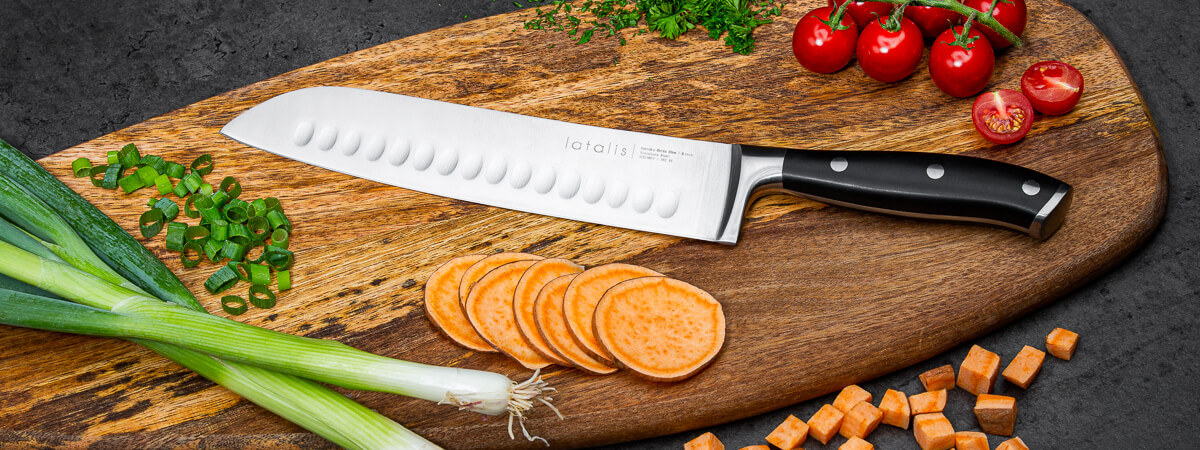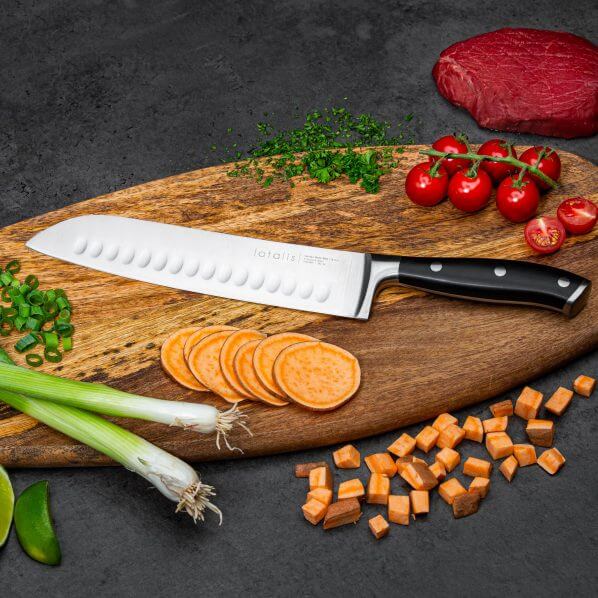
Santoku Knife
There are many different types of chef’s knives. For both the home cook and the professional chef, it is interesting to learn about different models of kitchen knives not usually found in a Western kitchen. Like the santo knife, for example. The santoku knife is a Japanese design that prevents ingredients from sticking to the blade.
What is a santoku knife?
A santoku knife is a kitchen knife of Japanese origin that is often used in Asian cuisine. The knife can be used for various cutting methods and is therefore also described as an all-rounder. You can recognize the knife by its high and wide blade, the top of which slopes downwards at the end, a straight cut and a D-shaped handle. The knives are razor-sharp due to the hardness of the material and remain sharpest when used on a wooden cutting board. Just like a chef's knife, some variants have dimples on the side of the blade to prevent the ingredient from sticking to the blade's surface.
Japanese origin
The santoku knife is the Japanese equivalent of the chef's knife. The knife is very versatile and can be used to cut vegetables, meat and fish. Santoku means "three virtues", which can refer to the different types of ingredients the knife is suitable for. It can also symbolize the different ways in which you can use the knife: the wide blade can be used to crush, scoop and cut ingredients. It is better not to use Japanese knives for chopping, as you risk damaging the blades.
The difference between a santoku knife and a chef's knife
The main difference between a chef's knife as we know it and a Japanese santoku knife is the shape. The santoku is smaller, lighter and therefore easier to use than a European chef's knife. Whereas European knives average twenty centimeters in length, santoku knives are often no longer than eighteen centimeters. The shape of the blade also differs: the point of a santoku knife runs diagonally towards the cut from the back whereas a European chef's knife has a pointed tip. This means that both knives work slightly differently and require different cutting techniques. The European chef's knife, for example, is cut with a rocking movement along the fingers with the tip resting constantly on the cutting board, whereas the santoku knife requires a technique that involves moving the knife up and down horizontally and releasing the blade from the cutting board.
Storing a santoku knife
How do you enjoy a sharp santoku knife for as long as possible? Use a handy magnetic knife block or knife holder, which will hold the santoku knife in place without the knife colliding with other knives or surfaces. This will allow the knife to retain it's sharpness. If the knife does get dull after prolonged use, you can use a professional whetstone or knife sharpener to make the blade sharp again.







